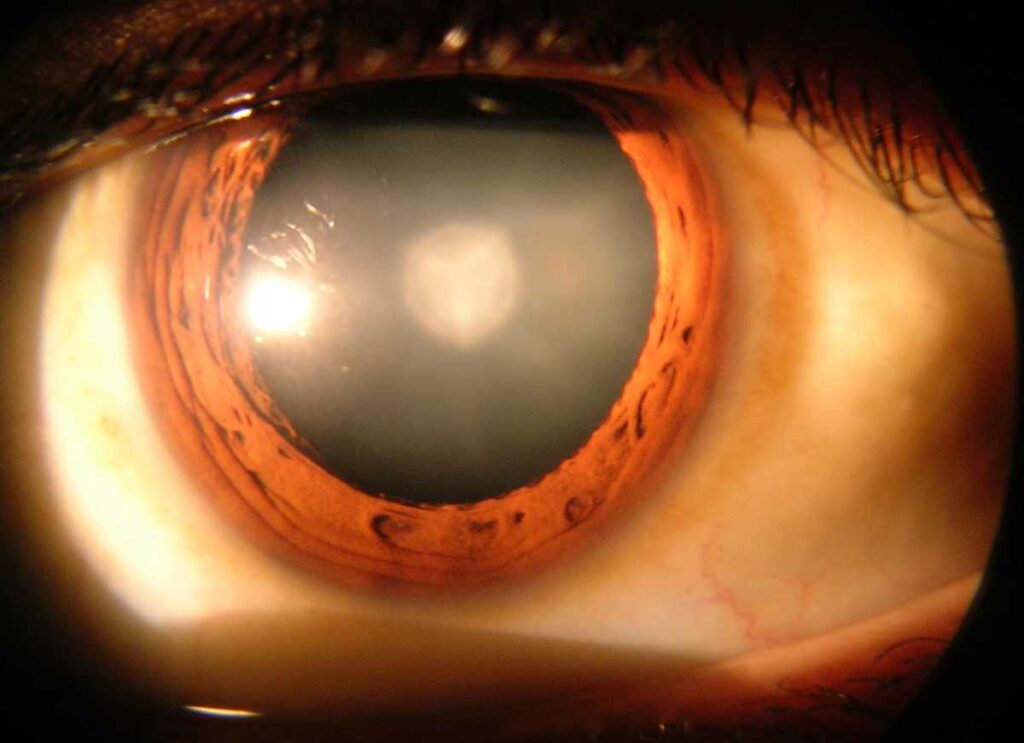Did you know that cataracts are the leading cause of blindness in the world? In fact, more than 20 million people suffer from this eye condition. But new research suggests that there may be a new treatment for cataracts: Second Sight. This innovative treatment uses a special device to restore vision in patients with cataracts. Read on to learn more about Second Sight and how it could help you or someone you love!
Contents
What Is Second Sight in Cataracts?

Second sight is a term used for improved vision in people with early-stage cataracts experience. Your close-up reading vision will be better before your overall vision changes and deteriorates. Some patients can read without glasses while they have second sight. Near vision refers to anything within 2 feet of you.”
Second Sight in Cataracts is a new treatment for the condition of cataracts. It is a type of advanced cataract surgery that involves implanting an intraocular lens into the eye to replace the clouded natural lens. This procedure has become increasingly popular since it can help improve vision and focus, particularly if the cataract is progressive or causes extreme vision problems.
What Are The Causes Of Second Sight?

The common causes of second sight are as follows:
As we age, our eyes can become less able to focus properly. This condition is known as presbyopia, which causes the eye’s focusing power to gradually decrease over time. This can lead to second sight in cataracts, as the natural lens becomes cloudy and cannot focus light onto the retina correctly
Genetic
Some people may have a genetic predisposition to cataracts, which can cause the lenses of their eyes to become cloudy earlier than normal. This can lead to second sight in cataracts.
Trauma
Injury or trauma to the eye can damage the lens and lead to second sight in cataracts. For example, if a person is hit in the eye or receives a hard blow to the face, this can cause trauma to the eye and lead to second sight in cataracts.
Medical Conditions
Certain medical conditions, such as diabetes and high blood pressure, can increase a person’s risk of developing second sight in cataracts.
Macular degeneration (AMD)
Macular degeneration is a condition that causes the macula, which is the center of the retina, to break down and become damaged. This can cause vision to be distorted or blurry, and can also lead to second sight in cataracts as it affects your eye’s ability to focus light properly onto the retina.
What Are the Symptoms of Second Sight?
The most common symptom of second sight is cloudy or blurred vision. You may find it difficult to see clearly and might experience a general haziness in your field of vision. Other symptoms may include:
- Difficulty focusing on near objects
- Glare sensitivity when looking at bright lights
- Double vision
- Color distortion
If you are experiencing any of these symptoms, it is important to speak to your doctor as soon as possible so that they can diagnose and treat the condition.
How Is Second Sight Diagnosed?
Your doctor will perform a complete eye exam, including checking for any signs of cataracts. They may also use special imaging tests such as OCT (optical coherence tomography) to check for any changes in the lens and retina. They may also perform a refraction test, which uses light to check how well your eyes are focusing.
How Is Second Sight In Cataracts Treated?
The treatment of second sight in cataracts is as follows:
Anesthesia
The eyes are first numbed with a local anesthetic to make the procedure comfortable and painless.
Surgery
Surgery is a common approach for those who are experiencing second sight due to cataracts. This involves removing the cloudy lens and replacing it with a new artificial intraocular lens (IOL). Surgery can help improve vision but may require follow-up treatments and monitoring. During the surgery, a tiny incision is made in the eye near the affected area. Then, a microsurgical tool is used by an ophthalmologist to remove the cataract, usually in its entirety.
Prescribed medications
Prescription medications can also be used to treat second sight. In some cases, your doctor may prescribe eye drops or ointments to help improve clarity and reduce inflammation. Your doctor can also advise on lifestyle modifications such as avoiding activities that strain the eyes or taking regular breaks from screens.
Post-surgery Care
After the surgery, eye drops and other medications may be prescribed to reduce inflammation and prevent infection. The patient will also be instructed to wear a protective shield at night for several weeks after the procedure. Follow-up visits are typically recommended by the doctor to monitor recovery.
Benefits
There are various benefits of second sight in cataracts:
Improved vision
A second-sight procedure during cataract surgery can improve the patient’s vision significantly, as it allows for more accurate targeting of the lens implant and better clarity of vision.
Reduced risk of complications
The second-sight technique reduces the risk of infection and other potential complications associated with traditional cataract surgery.
Long-term results
The second sight procedure is designed to provide long-lasting results, as the lens implant used in the procedure is proven to remain stable over time.
Quick recovery period
Patients who undergo the second-sight procedure typically have a much shorter recovery period than those who opt for traditional cataract surgery, as the procedure involves fewer steps.
Excellent visual outcomes
The second sight technique provides excellent overall visual outcomes and many patients report significantly improved vision after undergoing the procedure.
Thus, second sight in cataracts is an innovative and effective treatment option for those suffering from cataracts. This technique has the potential to offer improved vision, reduced risk of complications, and a shorter recovery period when compared to traditional cataract surgery. If you are considering this procedure, it is important that you consult with an experienced eye doctor who can evaluate your condition and discuss the potential benefits and risks associated with second sight in cataract surgery.
Risk
There is various risk associated with second sight in cataracts:
Retinal detachment
The most serious risk of second sight in cataract surgery is retinal detachment. This occurs when the retina becomes separated from its underlying tissue and can lead to vision loss.
Macular edema
Another complication of second sight in cataract surgery is macular edema, which occurs when swelling and fluid build up in the macula, an area of the retina responsible for sharp central vision. This can cause blurry or distorted vision.
Glaucoma
It is a common side effect of second sight in cataract surgery, as it can be caused by increased pressure inside the eye due to the surgery. It can cause vision loss if not treated properly.
Vision loss
Another risk of second sight in cataract surgery is that the patient may experience some degree of permanent vision loss, depending on the severity and extent of their condition.
Despite these risks, second sight in cataract surgery has the potential to restore vision and provide a better quality of life for those affected by cataracts. In addition, second sight in cataract surgery is generally safe when performed by an experienced ophthalmologist. Patients should always discuss any risks or concerns with their doctor before undergoing the procedure.
Self Care Tips
There are various self-care tips for second sight in cataract. They are:
1. Wear sunglasses when you go out in the sun to protect your eyes from the harmful UV rays of the sun.
2. Eat a healthy diet full of fruits and vegetables, which are rich in antioxidants that help reduce inflammation in the eye.
3. Quit smoking as it can damage your eyesight by causing cataracts and macular degeneration.
4. Use eye drops to reduce the symptoms of cataracts if you experience any.
5. Wear protective eyewear when engaging in activities like cycling, skiing, or other sports that could lead to physical damage to your eyes.
6. Take regular breaks from staring at screens to reduce the risk of eye strain.
7. Visit your ophthalmologist regularly and get regular eye exams to catch any signs of cataracts early on and prevent further damage.
By following these tips, you can help protect your vision and improve the success rate of second sight in cataract treatment. Don’t forget to consult your doctor for further advice and medical treatment. With the right lifestyle choices and regular check-ups, second-sight in cataracts can be effectively treated!
Conclusion
It may be concluded that second sight in cataracts is a viable treatment option for many people suffering from cataracts. It offers improved vision and a quicker recovery time compared to traditional methods. This new technique is becoming increasingly popular among ophthalmologists, as it has been proven to be safe and effective in treating cataracts. People who opt for second sight in cataracts will benefit greatly from improved vision and faster recovery time. Ultimately, the decision to choose second sight in cataracts should be made by a qualified ophthalmologist, with careful consideration of the patient’s unique medical history and lifestyle. With the right doctor, second sight can be a successful treatment for cataracts.
Cataract surgery is a safe and painless procedure. At MantraCare we have a team of experienced eye surgeons, who will be happy to answer any questions on cataract surgery. Call us at +91-9711116605 for any inquiries.
